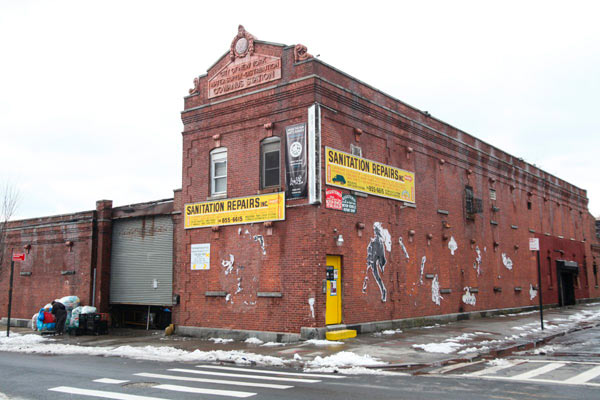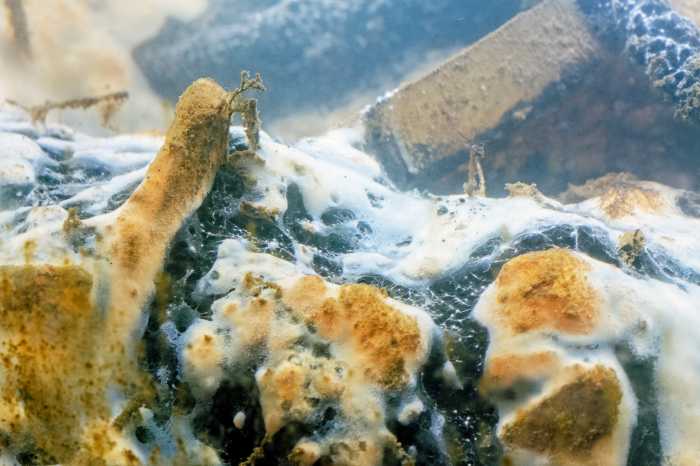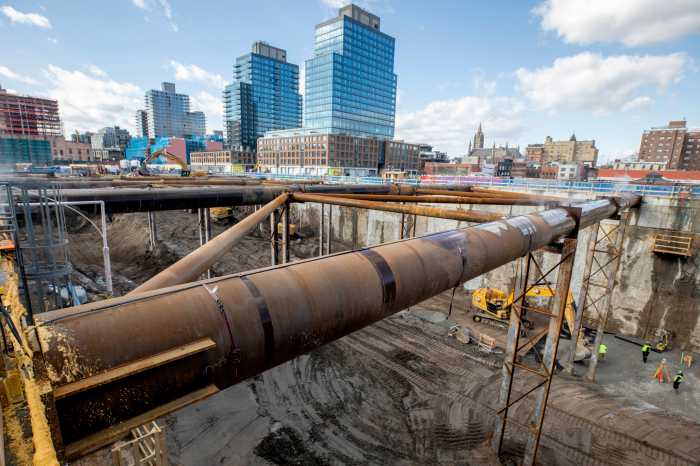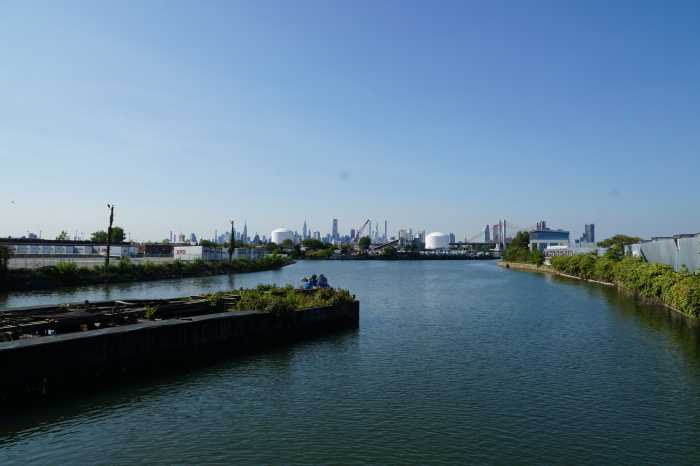This Protection Agency is doing double duty!
Federal officials overseeing the ongoing cleanup of the Gowanus Canal could save the so-called historic Gowanus Station building from the wrecking ball as city leaders seek to raze the structure in order to install a subterranean sewage tank on the land it occupies, according to the man spearheading the scrub.
“Because it’s a Superfund site, if an underground tank is built at the location where the building stands, then that location becomes part of the site,” said the Environmental Protection Agency’s project manager Christos Tsiamis. “And the EPA’s jurisdiction includes the fate of the building.”
Last November, the city kicked-off its lengthy Uniform Land Use Review Procedure in an attempt to seize the privately owned Butler Street property and an adjacent Nevins Street parcel through eminent domain to make way for two underground vessels that would hold a combined 12-million gallons of raw waste and storm water so neither spills into the canal during rain storms.
The Landmarks Preservation Commission in December decided not to move forward with a request to protect the Gowanus Station building because its members claimed the brick Beaux Arts structure lacked architectural merit after undergoing several alterations since it was built in 1913.
The agency instead gave the city’s Department of Environmental Protection the go-ahead to demolish the building that once supplied the city with water, and a spokesman for that department said it plans to bulldoze most of it and save only a few decorative elements, pending the outcome of the eminent-domain application.
“If DEP does acquire the property, we will look to save the Gowanus Station plaque as well as other ornamental features and incorporate them, where feasible, into the EPA–mandated retention-tank facilities,” said Edward Timbers.
But the ultimate power to preserve any historically significant building within the Superfund site lies with the Feds as the overseer of the cleanse, and Environmental Protection Agency bigwigs will consult with their own archeologist to make a final call regarding Gowanus Station’s fate, according to Tsiamis.
And the decision may differ or confer with the city’s, according to the cleanup manager, who explained the process alongside reps from the state’s Historic Preservation Office, the Environmental Protection Department, and the Landmarks Commission at a Feb. 27 meeting of local watchdog organization the Gowanus Canal Community Advisory Group.
“There’s an archaeological component as part of the Superfund process, and so that is why the EPA is involved — it has an archaeologist who, in consultation with those agencies, makes his assessments as to how to proceed and eventually we, EPA, have to make a decision based on that input, and the public’s, of course,” Tsiamis said. “We are taking into account the public’s wishes and the engineers’ challenges, and trying to come up with something that makes sense.”
The federal agency will make its decision on whether to save the building in the next few months, Tsiamis said, once it receives recommendations from its archeologist and city and state officials, who all will weigh in on how pricey and challenging it may be for engineers to preserve the entire structure.
“I will have to make a decision, then pass it onto the city,” he said. “I made it very clear that, from an engineering point of view, it would be very expensive to try to save the building and put the retention tank in same parcel of land.”
If the city doesn’t acquire the private land on Nevins and Butler streets by 2020, the Feds will move forward with installing the sewage tanks where cleanup leaders originally proposed they go: in the grave of the nabe’s beloved Double D pool, which must be exhumed in order to purge toxins buried beneath the play space, but will be rebuilt at its longtime site if the city’s eminent-domain proposal passes.
And in other news on the canal, the slow-going cleanup that began in 2016 is inching along, according to Tsiamis, who said engineers are still installing bulkheads along the fetid waterway in order to resume a pilot dredging-and-capping program in March that was originally supposed to wrap this April, but was delayed when workers’ too-powerful equipment started creating fissures in nearby land and buildings shortly after the job kicked-off last October.
























